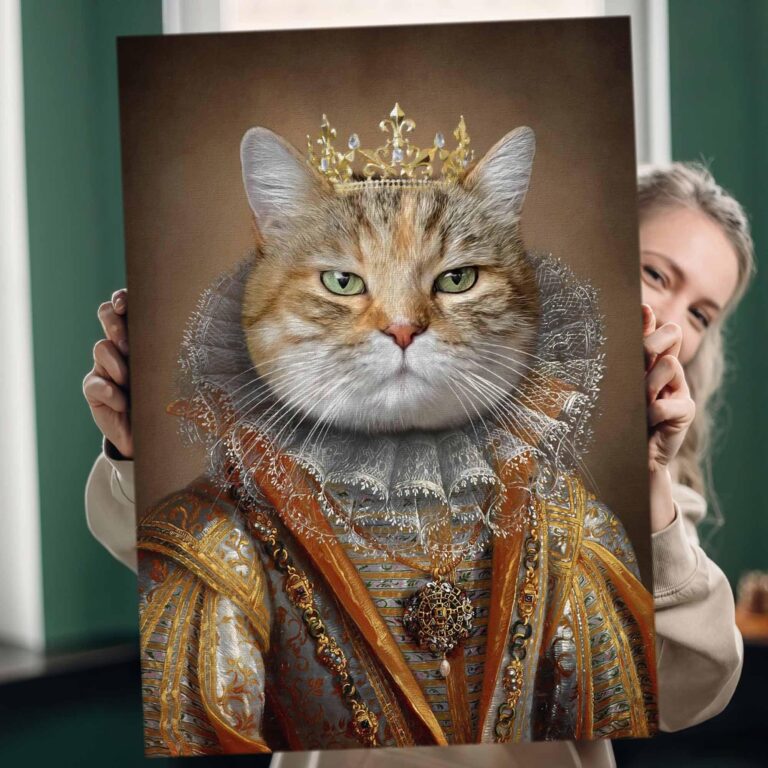Cat prints and dog prints differ in shape and size. Cat prints are small with four toes and a prominent heel pad while dog prints are larger with four or five toes and a visible claw mark.
Animal prints have always fascinated humans, whether it’s a leopard’s spots or a zebra’s stripes. Cats and dogs are popular pets among domesticated animals, and their paw prints have distinctive characteristics. Cat prints are small and compact, while dog prints are larger and more spread out.
Despite their differences, both prints can provide crucial information about the animal that left them behind, such as their size, weight, and gait. Animal tracks are a fascinating study for nature enthusiasts and can also help identify pests or predators in areas where humans or domesticated animals frequent.

Credit: www.etsy.com
Dog Footprints: Advantages
Dog footprints have several advantages. They can reveal the animal’s weight and stature based on the prints’ size. Different dog breeds also have varying paw sizes, which can be helpful in identification. However, dog prints can be misleading, particularly if the animal is moving at different speeds.
A dog’s gait and the terrain can also impact the clarity of the prints. On the other hand, cat footprints also reveal the weight and stature of the animal. Similar to dogs, different breeds of cats have varying paw sizes.
However, cat prints can be misleading as well, especially if the animal is moving at different speeds. The cat’s gait and the terrain can also affect print clarity.
Cat Prints Vs Dog Prints: Which Is Better?
The debate between cat prints vs dog prints has been ongoing for years. While some may argue that cat prints are superior due to their sleek and intricate design, others may claim that dog prints are more recognizable and easier to distinguish.
Factors that determine the superiority of one print over the other include the type of surface the print is found on, the size of the print, and the clarity of the individual toe marks. Animal footprints hold significance in today’s society as they allow us to identify and track wildlife in their natural habitats.
Understanding the differences between cat prints and dog prints can aid in wildlife preservation and conservation efforts.
Frequently Asked Questions For Cat Prints Vs Dog Prints
What Is The Difference Between Cat Prints And Dog Prints?
Cat prints and dog prints differ in shape, size, and imprint depth. Cat prints have oval-shaped, larger back pads and small front pads. Dog prints have larger front pads and a noticeable point between their toes.
Why Do Cat Prints And Dog Prints Look Different?
The differences between cat prints and dog prints occur due to their anatomy. Cats have retractable claws, and their pads have a different shapes to enable silent stalking. Dogs’ feet are adapted for running and digging.
Can You Identify Whether A Print Is From A Cat Or Dog?
It’s possible to identify a print from a cat or dog. One can identify it by looking at the shape and size of the imprints, the number of the imprints, or the claw imprints. A more in-depth analysis can be done by experts.
What Factors Affect The Appearance Of Prints?
The appearance of prints is influenced by factors such as the surface on which they were made, the animals’ speed, the imprint depth, the shape of the footpads, and the presence or absence of claws. These factors play a role in the durability and clarity of a print.
Can Cat Prints And Dog Prints Be Used For Identification?
Yes. Animal prints can be used for identification in case of any incidences such as wildlife intrusion or criminal investigations. Clear prints can be used to determine the animal species, size, and direction they were moving. DNA analysis can also be performed on the prints.
What Are The Similarities Between Cat Prints And Dog Prints?
Both cats and dogs have digitigrade feet, which means they walk on their toes, and their prints are made of a combination of paw pads and claw impressions. They also differ in size, shape, and thickness of the paw pads.
Conclusion
As we wrap up this discussion on cat prints versus dog prints, it is clear that both animals leave unique tracks that can offer insights into their behavior, size, and environment. While cat and dog prints may share similarities, there are distinct differences that can be observed and analyzed by those who are trained to do so.
By understanding the nuances of each type of print, researchers, animal lovers, and even law enforcement can gain valuable insights that can help them better understand and protect these beloved creatures. Whether you are a cat or dog person, there is no denying the fascinating world of animal tracking and the important role it plays in our understanding of the natural world.
So the next time you come across a set of prints in the great outdoors, take a closer look and see if you can decipher the story they have to tell.



